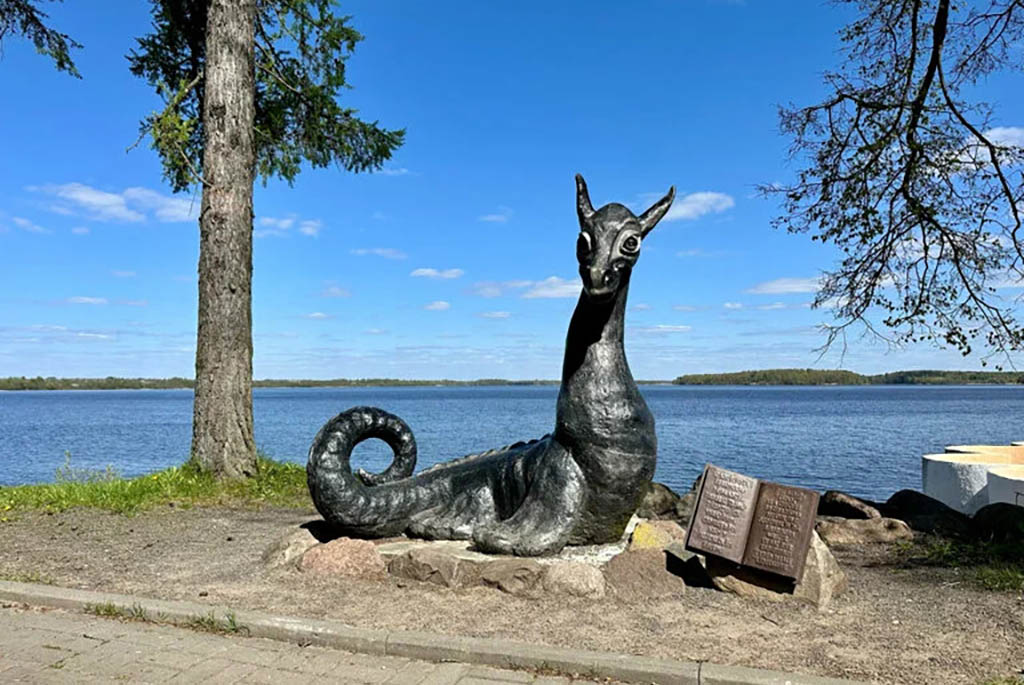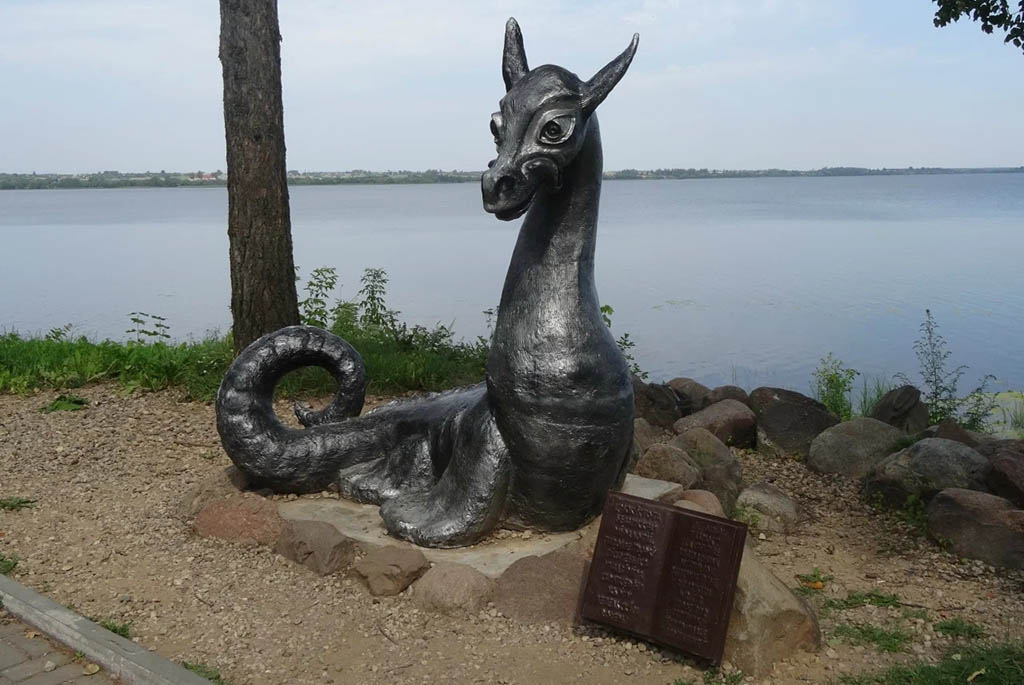Outwardly, it looks like a mix between a snake and a dragon: a long body covered in scales, large wings, sharp teeth, and a vivid coloration. According to our ancestors, Tsmoks lived in caves and at the bottom of deep water bodies. Such creatures are found not only in Belarusian folklore but also in the legends of other European peoples. The distinction of the Belarusian Tsmok is that it's not a fearsome, bloodthirsty character. Folk beliefs suggest that Tsmoks mostly lived in harmony with humans and even helped in household tasks. Their images can be found in Belarusian folk painting, embroidery, and decorative arts.

In 2013, in the city of Lepel in the Vitebsk region, on the shore of the Lepel Lake, a bronze sculpture of a Tsmok was installed. The initiator of the sculpture's creation was a local artist and historian, Vladimir Shushkevich. As a child, he heard legends from his grandmother about how, in ancient times, a monster lived in the Lepel Lake. On someone's wedding day, it would come to the shore to get food from the wedding table. This was linked to a ritual where the newlyweds poured a symbolic glass of moonshine into the water and threw a treat.
Another mention of the Lepel Tsmoks can be found in the historical novel by V. Korotkevich "Christ Landed in Grodno", which describes events of the 16th century. The author describes the water dragon as a creature with a thick neck, wide fins, a body resembling a seal, and a head that simultaneously looks like a deer and a snake. The novel mentions that for unknown reasons, dozens of Tsmoks that lived in the Lepel Lake died overnight.

The author of the sculpture installed in the Lepel city park was Lev Aganov. Before starting his work, the sculptor studied many sources that provide a detailed representation of this character. The Lepel Tsmok turned out to be quite friendly, cute, and peaceful. The sculpture became a recognizable symbol of the city, attracting tourists and serving as a reason for various cultural events. In honor of the character, an annual mythology festival "Visiting the Lepel Tsmok" was organized in Lepel, attended by musicians and folk craftsmen from Belarus and nearby foreign countries. Later, the festival was renamed "The Path of the Tsmok". Since 2019, "The Path of the Tsmok" has been held in the village of Domzheritsy in the Lepel district.